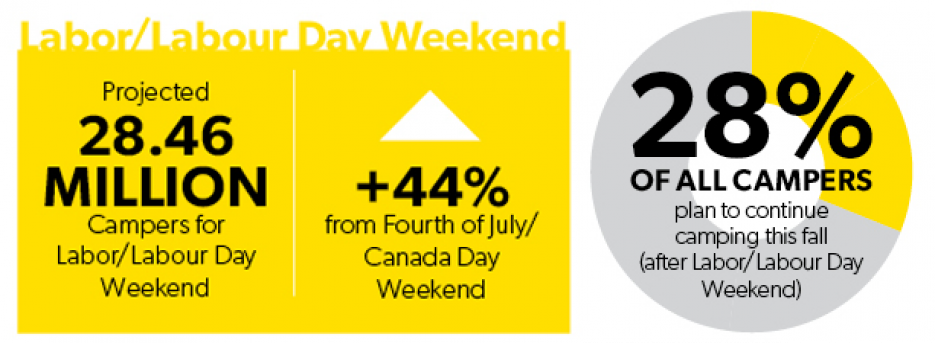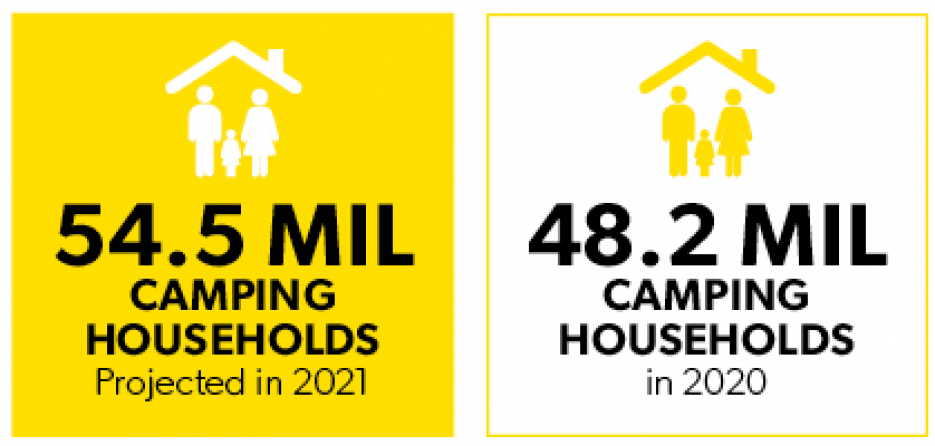Labor Day Camping Projected To Surpass Memorial Day And July Fourth Holiday Activity
The KOA Monthly Research Report – August Edition indicates that 28.46 million households across North America plan to camp over the Labor Day/Labour Day holiday. This represents a 60% increase in camping households over Memorial Day Weekend and 44% more than Fourth of July. These impressive findings continue to bolster the results of Kampgrounds of America’s (KOA) annual North American Camping Report, released in April 2021, and indicate another exceptionally strong camping year.
About one-fourth of all campers over the Labor Day/Labour Day weekend will camp over the long weekend only; almost 1-in-5 plan to add 1-2 additional days around the holiday, and only 12% plan to camp the entire week. For campers who will only be camping over the holiday in next 30 days, almost half – 40% – plan to do so for the long weekend only.

The popularity of the holiday weekend is projected to continue into the fall as 28% of all campers say they plan to take more trips this autumn. While COVID remains a concern, overall cancellations and changes to camping plans will be low – only 1-in-5 note they have made changes to fall camping plans.
“Last year we experienced our best fall on record at KOA,” said Toby O’Rourke, president and CEO of Kampgrounds of America. “As people felt more comfortable traveling and restrictions continued to loosen, we saw people extend their camping into the fall shoulder season. Fall is such a wonderful time of year to camp and 2020 let a lot of guests experience that again or for the first time. The results of this month’s research, as well as our advanced reservations, make it clear that fall camping is only becoming more popular.”
Looking at the year as a whole, August finds that 54.5 million households plan to camp in 2021. KOA estimates that 5.3 million new household – a 1 million household increase from the 4.3 million projected in May – will camp in 2021.

“The month-over-month growth that we continue to see in the camping industry is very exciting,” said O’Rourke. “And we’re not just seeing more campers, but growth in site development, infrastructure and even a dramatic increase in new-builds that will support the growing interest in camping among all types of campers and generations for years to come.”
Key camping industry indicators tracked by KOA include participation, incidence and future intent, and preferred type of camping.
View the report here.
Please Sign in to View
Log in to view member-only content.
If you believe you are receiving this message in error contact us at memberservices@rvia.org.
